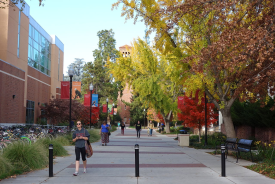Yale Researchers Find Possibility Of Combating Autism Through Combination Approach [VIDEO]
ByResearchers at Yale University have found that administering a combination of the hormone oxytocin and the drug naloxone may benefit children with autism spectrum disorders. This is helpful when receptors for opioids are also blocked.
Opioid receptors react to brain chemicals activated by drugs like heroin. These tend to disconnect people socially. The study has been published in the journal "Proceedings of the National Academy of Sciences."
Oxytocin is known to play a significant role in sealing social bonds during activities like sex and nursing. However, its use in facilitating greater social connections among people with autism has had success but it's not that impressive.
The Fix reported that oxytocin can help quell alcohol cravings without having people dependent on another drug. Moreover, the hormone is being studied as treatment for schizophrenia and autism.
It also helps women recover from chronic pain after childbirth, Medical Daily added. Another study by researchers from Wake Forest School of Medicine found that chronic pain after delivery is rare and it could be because the body has a protecting mechanism against it.
According to Yale News, researchers at the Ivy League institution were able to see a rise in social interaction among monkeys when oxytocin delivery was paired with the drug naloxone. Naloxone blocks opioid receptors and is used to combat heroin overdoses. The increase in social interaction was measured using the extent of eye contact between the test subjects.
Opioid morphine use has also been known to disrupt lactation in nursing mothers. The drug naloxone reverses the symptoms by facilitating increased production of oxytocin.
It was noted that the two neurochemical systems seem to be evolutionarily linked in human behavior. Oxytocin spurs the creation of strong social bonds while opioids trigger greater social isolation.
An increase in the production of oxytocin and the inhibition of opioid receptors boost social interactions. This happens in a way that cannot be observed when using either approach individually.
© 2025 University Herald, All rights reserved. Do not reproduce without permission.








